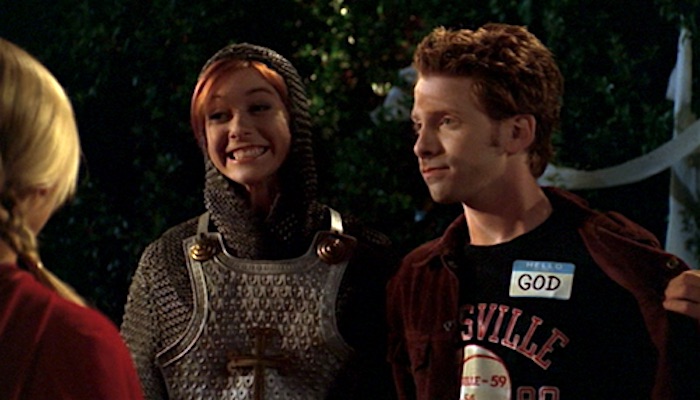With Lidia Yuknavitch’s highly-anticipated Joan-of-Arc-in-spaaaace novel, The Book of Joan, coming out next week, we started thinking about other pop cultural Joans of Arc. We found some interesting riffs on the original story that ranged from heartwarming family dramas to fantasy epics to The Simpsons. One fascinating thing though: each take on Joan’s story has to find a way to reckon with the ending. Like that other Christian martyrdom story, you tend to learn about Joan’s death in the same moment that you learn about her heroic life—she’s defined as much by how and why she died as she is by her military prowess. Because of this, modern retellings of Joan story have to decide whether to face a story with a sacrifice at its center, or find ways around it.
Joan of Arc/Noah’s Wife/Miss Of Arc—Bill and Ted’s Excellent Adventure
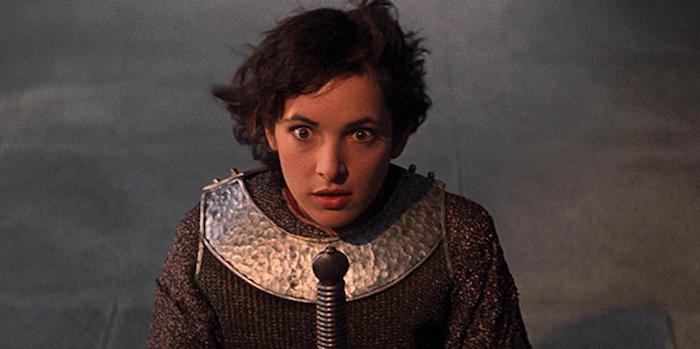
When Bill and Ted pick Joan of Arc up, she’s in prison, praying in front of a cross. She thinks they’re angels come to save her from execution, and crosses herself as she climbs into the phone booth. The treatment of Joan in the film is fascinating – they talk about her military strategy, and she enthusiastically learns aerobics at the mall and demonstrates sword fighting during the presentation. Despite taking the time to introduce her religious devotion in her intro scene, they don’t touch on her religious significance after that, never referring to her at St. Joan. They also don’t talk about the nature of her death, and in the end she just climbs back into the phone booth and goes back to the past, where she’s going to be dropped off presumably just before her execution. History has to happen, so she has to die, but it’s simply glossed over. (Same thing with Abraham Lincoln and Socrates – but at least they got to live for a few decades, Joan wasn’t even 20.) Bill and Ted also respect her as an individual. While the Medieval Babes are primarily eye candy in the first film, and always framed as romantic interests for the future Wyld Stallyns, Joan is never presented in this way, despite the fact that she was only 19 when she died, and so probably only at most a year older than her time-traveling hosts.
Vin—Mistborn trilogy
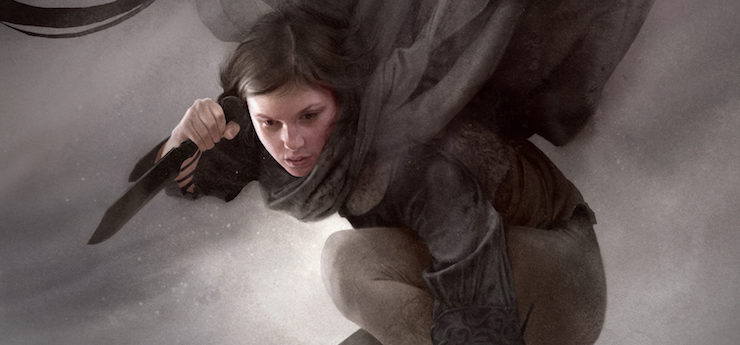
Brandon Sanderson’s Mistborn features a character who is certainly Joan-esque, if not a direct riff. Vin, a powerful Mistborn who grew up on the streets and rose to prominence through cunning, is considered by some to be the prophesied Hero of the Ages. She is also worshipped as a god figure by The Church of the Survivor, and later called the Ascendant Warrior as her legend grows. Even more than the legends that surround her, it’s Vin’s tactical mind that recall the historical Joan. Vin proves again and again that she is able to assess battles quickly, and improvise winning strategies without displaying fear. She is also willing to both kill and die for her loved ones, going up against the Lord Ruler, and putting her own life on the line for her beloved, the Emperor Elend Venture.
D’Joan—“The Dead Lady of Clown Town” by Cordwainer Smith

In his 1964 short story “The Dead Lady of Clown Town”, Cordwainer Smith made the martyrdom of Joan the central point of the story. The story is part of his Instrumentality of Mankind stories, which depict a future “utopia” that is populated by people, who have rights and freedom, and “underpeople”—a class of uplifted animals who have no rights, despite the knowledge that they are as intelligent as their human counterparts. A therapist named Elaine become entangled with a group of underpeople who live in hiding in Clown Town, a warren of service hallways that aren’t frequented by regular humans. These underpeople are being supported by the personality recording of Lady Panc Ashash (hence “Dead Lady”).
The underpeople have gathered around a leader—a dog-woman named D’Joan—who leads them in a march into the city. Everyone follows her knowing it means their doom. As expected, the underpeople are killed, but the ruling class chooses to give D’Joan a trial before burning her, which has the unintended consequence of creating sympathy for her and her movement. This in turn leads to the founding of a religion called ‘The Robot, the Rat, and the Copt’, and a new era of equality for all. Here, as in the original story, Joan’s death is pretty much a foregone conclusion, and she walks straight into it.
Joan Girardi—Joan of Arcadia
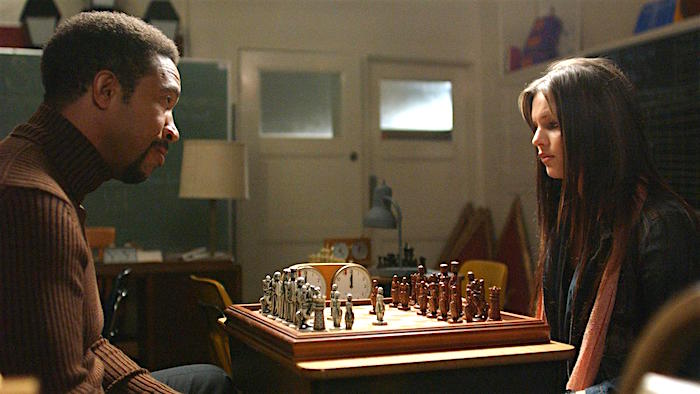
Joan of Arcadia took the basics of Joan’s story and spun them into a Woobie of the Week show (a spin on the procedural in which the main characters help out a new “troubled” guest star each week) featuring: a police officer dad trying to be the hero his family needs; a mid-crisis-of-faith Catholic mom who’s barely holding herself together; a recently paralyzed brother who’s trying to adjust to his new challenges; a genius son who uses his intellect for everything; and a snarky sister who is suddenly receiving marching orders for God. Since this is a heartwarming mid-2000s family drama, God (played by a different actor each week) tends to be either snarky or wise, and Joan, while reluctant at first, eventually becomes a pretty plucky divine messenger. The show skirts the sacrificial aspect of Joan’s story for the most part, and like many Woobie shows, Joan sets out to make order of chaos, working with the idea that the universe is unfolding according to a plan of some sort.
Jaye Tyler—Wonderfalls
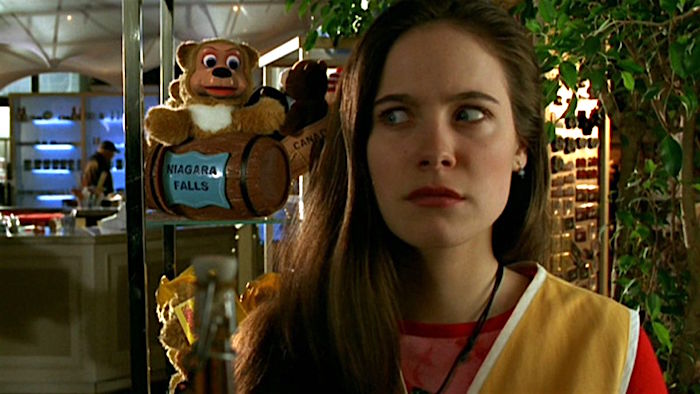
The other mid-2000s Joan of Arc was decidedly less plucky, and never quite found out who was sending her cosmic missions. In Wonderfalls, Jaye Tyler—a recent Brown graduate who chose to work at a Niagara Falls gift shop rather than pursue a career, much to the consternation of her overachieving family—suddenly begins receiving orders from random tchotchkes. Sometimes it’s a Wax Lion, sometimes a Cow-Shaped Creamer… she never knows which inanimate object will turn to her and tell her to do something strange. Also unlike the protagonist in Joan of Arcadia, Jaye doesn’t always learn whether her attempts to help work, and if she ignores the commands entirely, her life will spin out of control until she does as she’s told. Wonderfalls’ tone is far more urgent than Joan’s simply because Jaye never gets any real answers, and honestly believes she might be losing her mind.
Joan (The Clone)—Clone High
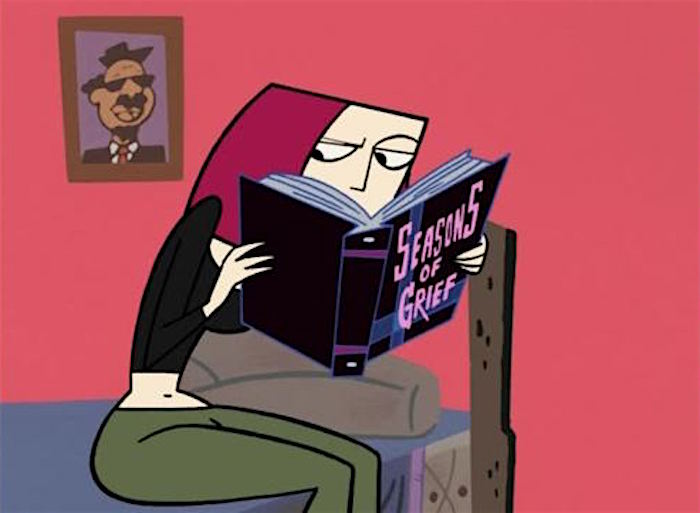
The clone of Joan of Arc featured in Clone High emphasizes her youth, accepting her as the high-school-age girl she was when she became an icon. Joan clone is a Goth girl, smart, sarcastic, and hopelessly crushing her best friend, Abraham Lincoln. (Unfortunately Abe is into their classmate, Cleopatra.) This version of Joan is an agnostic who sometimes resents her Clone Mother for her faith, while at other times desperately wishes she could live up to the historical Joan’s legacy. She shares OG Joan’s dedication to political causes, however, and supports every underdog she meets.
Willow Rosenberg and Buffy Summers—Buffy the Vampire Slayer

Buffy the Vampire Slayer worked two references to Joan into its seven season run. In “Fear, Itself”, Willow dresses as Joan of Arc for Halloween—she’s felt a connection with Joan ever since she, too, was nearly burned at the stake for witchcraft. And in “Tabula Rasa”, the Scooby Gang’s memories are wiped when one of Willow’s spells goes awry (again). As they all try to piece themselves together, Buffy—lacking an ID card with her name on it—decides “I feel like a Joan”, soon realizing that she’s kind of a superhero. This is a significant shift for Buffy, who had previously chosen to hide behind her own middle name, Anne, when she needed time away from the Hellmouth. But in the later seasons she’s ready to step into a heroic role even when she doesn’t remember who she is… mere hours after singing an ode on walking through the fire to find her place in the universe again.
Lisa Simpson—The Simpsons
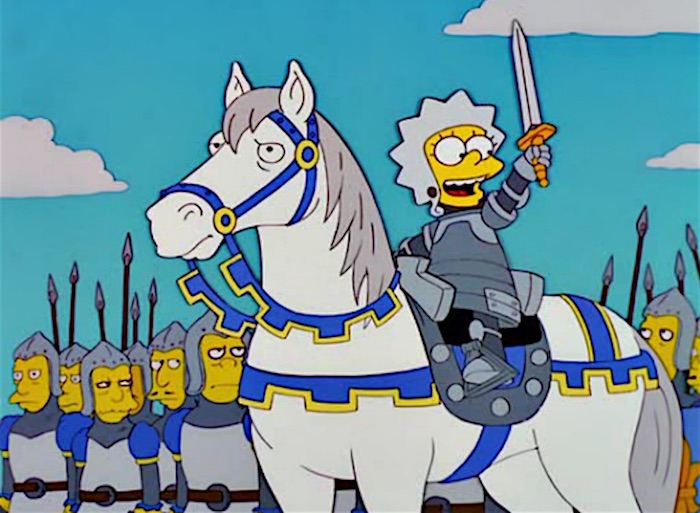
In The Simpsons episode “Tales From the Public Domain” Homer reads Lisa the story of Joan of Arc. Obviously Lisa identifies with the heroic Joan, while Milhouse takes on the role of the weak-willed Dauphin. The straightforward adaptation does provide one fun twist: just as Joan is about to be burned at the stake, Lisa interrupts her father to ask if Joan was actually killed. Marge bounds into the room and finishes the story with a wonderful sci-fi flair, saying, “Just then, Sir Lancelot rode up on his white horse and saved Joan of Arc! They got married and lived in a spaceship!”—which is definitely a better ending. Then Marge eats the page to protect her daughter. It’s a great moment in the episode, as it finds a way to make the story fun, while also acknowledging Joan’s real fate.
Katniss Everdeen—The Hunger Games trilogy

You can interpret The Hunger Games’ Katniss Everdeen as a fantastical version of Joan. Obviously the original point of the Hunger Games is a ritualized martyrdom of children, who are dying for their communities while they remind those communities of the power of the government. Katniss herself makes a mark with viewers by becoming the “Girl on Fire”, and again in caring for Peeta. When Katniss rebels against the rules of the Games, she becomes a symbol of hope for her people, and they can pin all sorts of meanings on her. But unlike most Joan riffs, Katniss isn’t guided by a divine sense of purpose—she just wants to survive, and she wants to protect her family. As the books continue, and revolution begins to bubble over, we go deeper into her mind to find a person who has been ravaged by emotional trauma, physical injury, and drug addiction. The idea of her death is fetishized from the beginning by both the government she opposes and the rebellion that seeks to use her as a symbol—but it’s all a misdirection for the series’ final brutal and random act of violence.










